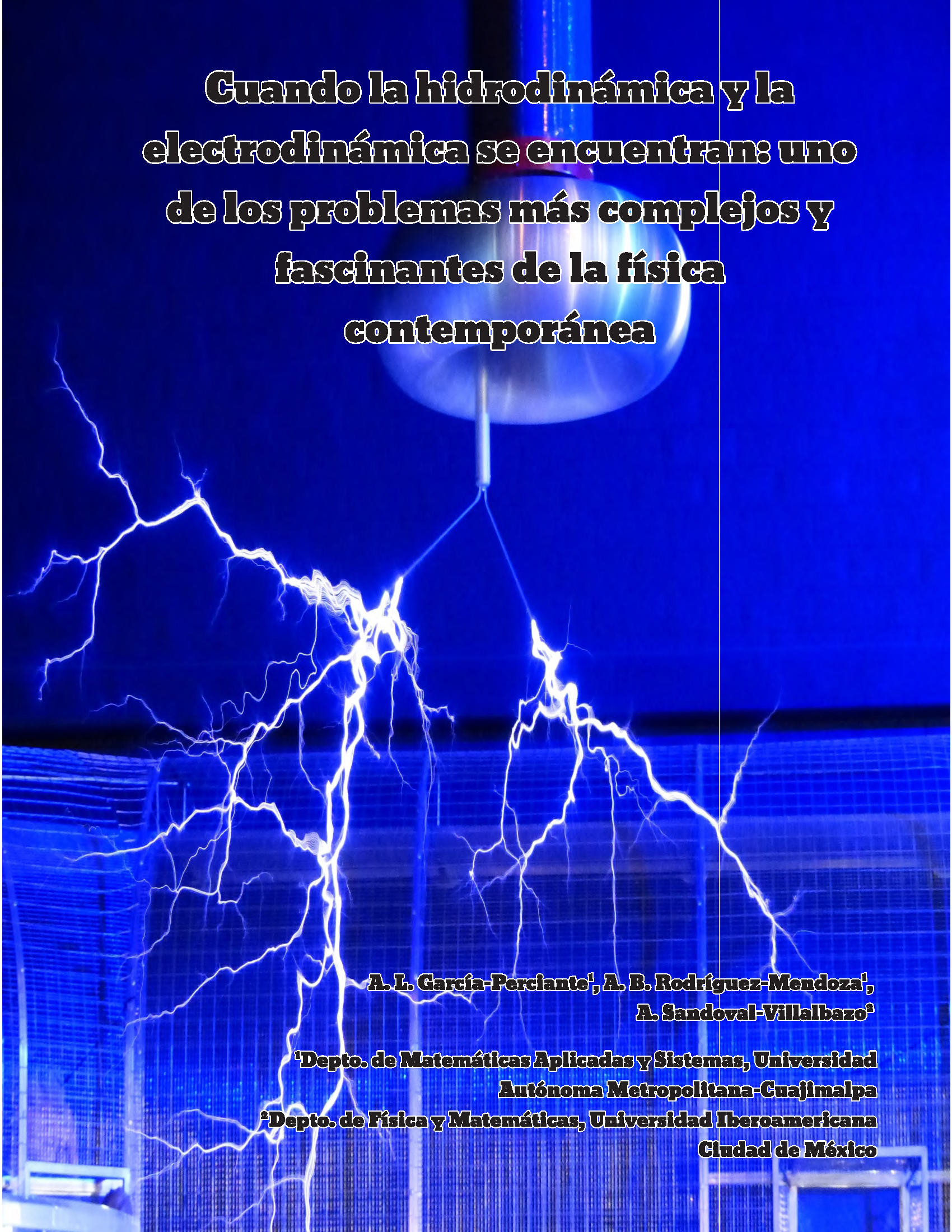When hydrodynamics and electrodynamics meet: one of the most complex and fascinating problems in contemporary physics
Abstract
Plasma physics has been a mainstream topic in science for decades. The range of applications already in use, in development and projected for the future is outstanding. The mathematical formalism involved in the description of such systems is as elegant as is elusive. Such model involves both hydrodynamics and electrodynamics, and has only been approachable in its complete form numerically. Analytical solutions are only attainable for particular cases and after several approximations have been considered. However, the mathematical problem is very well understood and the equations can be written down including all dissipation mechanisms. These topics are at hand both for advanced students to approach on their own as well as for teachers to address in intermediate courses. Kinetic theory serves as a base for the fluid equations as well as a robust method in order to establish constitutive equations which otherwise need to be invoked by means of phenomenological or experimental arguments. This work moti vates the inclusion of this topic in intermediate and advanced physics courses by firstly pointing out interesting and useful applications of plasma physics. Secondly, the work explains in a somewhat schematic fashion the description of the charged :fluid based on kinetic theory from which all dissipative eff ects can be accounted for. The magnetohydrodynamic equations including all dissipative eff ects are shown and described. Sorne concluding remarks are included in the last section, along with an invitation for young scientist to approach this fascinating topic.
Downloads
References
Landau, L. D. y Lifshitz, E. M., Course of Theoretical Physics, Volume 6 Fluid Mechanics, Butterworth-Heinemann, Oxford, 1987.
Grifliths, D. J., Introduction to Electrodynamics, London, Pearson, 1999. Choudhuri A. R., The Physics of Fluids and Plasmas: An Introduction for Astrophysicists, Cambridge University Press, Cambridge, 1998.
Bravo, S., Plasmas en todas partes, Fondo de Cultura Económica, México D. F., 1997.
Willis, K. P., Osada S., Willerton, K. L., Plasma gasification: lessons learned at Ecovall WTE fascility, Proceedings of the 18thAnnual North American Waste-to-Energy Conference NAWTEC, Florida, 2010.
Bigot B., Pull together for fusion, Nature, 522, pp.149-151,2015.
Chapman, S. y Cowling, T. G., The mathematical theory of nonuniform gases, Cambridge Mathematical Library, Cambridge, 1971.
Balescu, R., Transport Processes in Plasmas, Vol 1 Classical Transport, North Holland Publ. Co.,Amsterdam, 1988.
García-Colín L. S., García-Perciante A. L., Sandoval-Villalbazo A., Thermoelectric and thermomagnetic effects in dilute plasmas, J. Non-Equilibrium Thermodynamics 32, pp. 379-394, 2007 y Dufour and Soret effects in a magnetized and non-magnetized plasma, Physics of Plasmas, 14,012305,2007.
García-Colín L. S., Dagdug Lima, L., The Kinetic Theory o/ a Dilute Ionized Plasma, Springer Series on Atomic, Optical, and Plasma Physics Vol. 53, Berlin, 2009.






